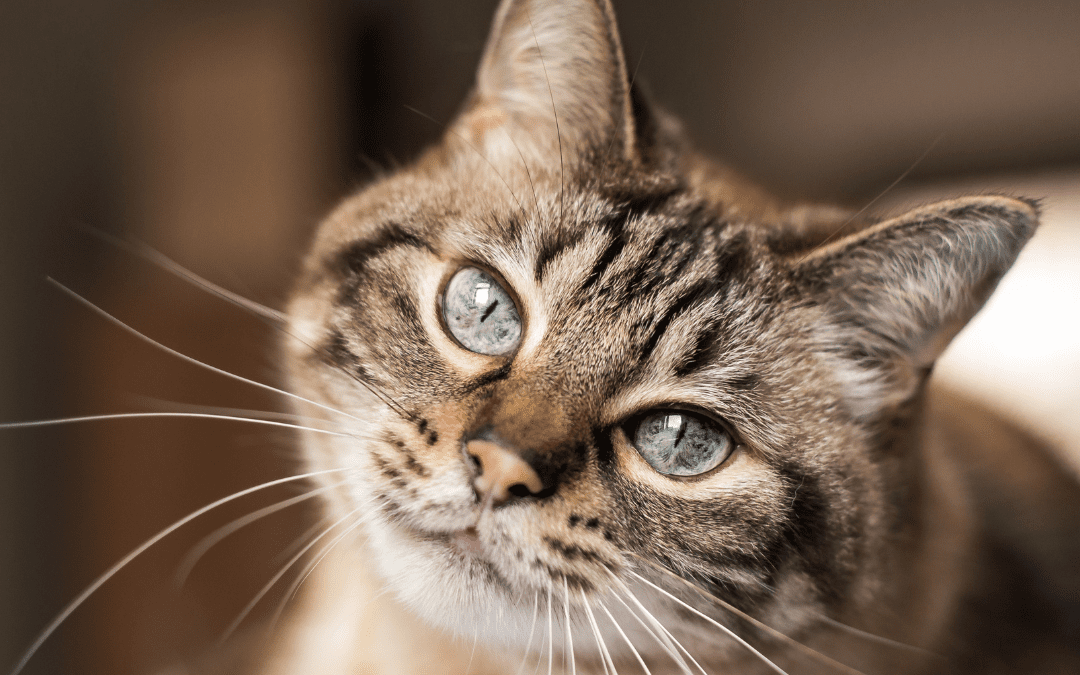Do you have a cat who coughs, and you are wondering what to do? Or maybe your feline friend has been diagnosed with cat asthma and you are not sure what the best treatment is. Whatever your questions, we’ve got you covered.
How common is asthma in cats?
Cat asthma affects around two percent of cats. That may not seem like a very high number but with a cat population of 11 million, that’s around 220,000 cats affected in the UK alone! Cat asthma is more common than you might think.
All types of cats can be affected, but some breeds such as the Siamese may be predisposed. Although this has not been thoroughly investigated, the increased tendency is likely to have a genetic basis.
So…
What are the signs of cat asthma?
Similar to the condition in people, some cats with asthma will wheeze. However, more often than not a cough will be the first indicator that all is not quite right. Recognising the signs of cat asthma is important as not only can the condition be life-threatening, but starting treatment early, increases treatment success.
- A cough which has been present for some time
- Wheezing
- Increased effort to breath
- Rapid breathing
- Blue gums and tongue
- Gagging
- Increased swallowing
Tip: Blue gums, open mouth breathing or an increased effort to breath are a veterinary emergency. Contact your vet without delay!
Why is my cat coughing?
Cats can cough for lots of different reasons, which is why it is important to seek veterinary advice sooner rather than later. From infection to pneumonia or a foreign body like a blade of grass, your vet will help to determine the underlying cause. But did you know that a cough due to cat asthma is often mistaken for fur balls?
Cats who cough due to fur balls will normally only bring up a fur ball one or two times a month. This will vary depending on how frequently a cat grooms, and how fluffy their fur is, but it serves as a good guide. Cats with asthma will usually cough more regularly than this.
They will also tend to adopt a different posture. A cat coughing up a fur ball will sit upright and look uncomfortable. They may vocalise. This will usually be followed by violent stomach contractions before fluid and a fur ball is produced.
By contrast, cats with asthma will crouch low to the ground when they cough and extend their head and neck to straighten their airway.
What causes cat asthma?
Cat asthma is caused by an allergic reaction to inhaled allergens. Common triggers include…
- cigarette smoke
- pollen
- dust
- mould
… and the signs can be made worse by environmental irritants like pollution and household chemicals as well as perfume and air fresheners. The resulting airway inflammation results in irritation, swelling and constriction of the airways, as well as an increase in mucus production. Depending on the extent of these effects on the airways, signs may vary from a chronic low-grade cough to an acute asthma attack.
How is cat asthma diagnosed?
First things first, if your cat is coughing and wheezing, or even just not quite right, you should arrange an appointment with your vet.
History
Your vet will usually start by asking lots of questions, and it may be worth making a note of anything abnormal that you have noticed before the appointment. In an emergency, if your cat is having an asthma attack, this history taking may be left until a little later, as the priority will be stabilise your cat first. Questions are likely to include:
– When did you first notice anything wrong?
– How often does your cat cough?
– Is there any pattern or seasonality to your cat’s signs?
– Are your cat’s signs getting worse?
– Have you noticed any particular triggers?
– Does anyone smoke around your cat?
Tip: Take a video of your cat when it is coughing to show your vet
Clinical examination
Next, your vet will examine your cat, looking for any abnormal signs. They will look at your cat’s breathing and how rapid it is. They will listen to your cat’s chest and assess the colour of their gums. And they will also assess your cat’s general health including whether there has been any weight loss for example.
X-rays
Chest x-rays will usually form part of the investigations. Sometimes there will be signs that are strongly suggestive of cat asthma – a characteristic appearance to the lungs, or in severe cases a collapsed lung lobe for example. Even broken ribs from the effort of coughing. However, in other cats, there may be no visible signs on an x-ray. This is still useful though, because it will help your vet rule out lots of other conditions.
Your vet may also suggest blood tests, and sampling fluid from the lungs and lower airways. Sometimes cat asthma is what is known as a ‘diagnosis of exclusion,’ in other words it is diagnosed by ruling out other possible causes of coughing and wheezing in cats.
How is cat asthma treated?
Once diagnosed, your vet will work with you to develop a suitable treatment plan for your cat’s asthma. The goal is to prevent any asthma attacks, control your cat’s signs of asthma, and help them to breathe better. Treatment will need to continue lifelong because unfortunately asthma cannot be cured.
In the short term, especially in an emergency situation, medication is likely to be given by injection, followed up with tablets. However, after the signs have been stabilised, just as in people, inhaled medication is usually the best way of managing the signs.
What is the AeroKat Chamber?
The AeroKat Chamber is a spacer device that enables the use of inhalers by capturing and holding the medication so your cat can breathe it in. Most cats can be trained to use it in as little as four days.
Inhaled medication…
- Delivers the medication directly where it is needed, the lungs and lower airways
- Reduces the risk of side effects often associated with systemic medication given by mouth
- Is well tolerated by cats, and often easier to give than tablets
- Is suitable for long term use
Tip: Fish paste on an AeroKat mask can help train food-orientated cats to accept the device
What is the best cat asthma inhaler?
A study in 2020 looked at the amount of medication that is delivered to the lungs by a number of different spacer devices.1 Different spacers delivered vastly different amount of medication and the study showed that the best device by a significant margin was the AeroKat. Worryingly, one spacer device delivered almost no medication at all.
Not only do poorly designed spacers have implications for a cat’s respiratory health in the short term, but they can also be costly in terms of leakage of medication in the longer term.
The AeroKat Chamber…
- Had medicine availability that was nearly twice as good as the other chambers in the study
- Maintained drug availability for longer, giving cats more time to inhale
Not only that, but a survey revealed that more than 80 percent of cat owners found the AeroKat Chamber easier to use than giving their cat pills.2
Feline asthma affects a considerable number of cats. Recognising the signs and seeking early veterinary advice is crucial for successful management. While lifelong treatment is essential, the use of the AeroKat Chamber to deliver inhaled medication prescribed by your vet can greatly improve your cat’s quality of life. You can learn more about the AeroKat or make a purchase here.

